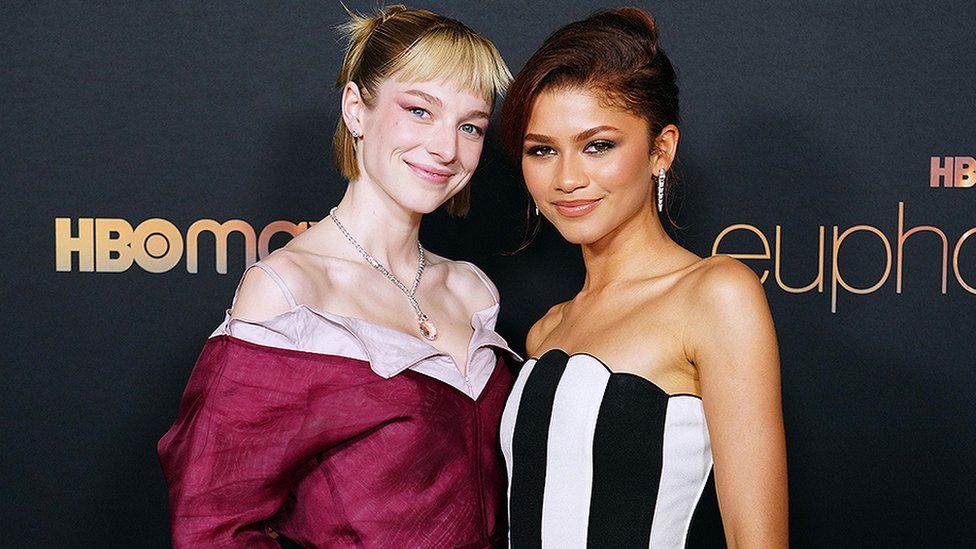Record number of LGBT characters on US TV, study says
- Published

A new report has found LGBT representation on US TV is at a high, with nearly 12% of regular characters who are LGBT, up 2.8% from last year.
The numbers come from a study by LGBT media advocacy group GLAAD.
But the study also found there were shortfalls and missing opportunities to tell a wider range of stories about LGBT characters.
The "Where We Are on TV" analysis looked at overall diversity of shows, focusing on the US.
The report examined broadcast TV, which is free, cable TV, which is paid for and streaming platforms - mentioning popular shows such as Sex Education, Euphoria and Killing Eve for positive representation.
The breakdown
Out of 775 series-regular characters on broadcast TV, 11.9% are LGBT, making up 92 characters, with an additional 49 in recurring roles.
Lesbian characters, such as Batwoman on CW, represented the majority of LGBT characters on broadcast and cable.
Gay men on screen saw a decrease by 5% on broadcast and 3% on cable compared to last year.
Bisexual representation such as Loki in Disney+'s Marvel series Loki, made up 29% of all the LGBT characters on broadcast, cable and streaming - an increase of 1%.
For a fourth year in a row, the report found that LGBT people from ethnic minority backgrounds outweighed white LGBT people on broadcast.
More streaming
The streaming services analysed this year expanded from Amazon, Netflix and Hulu to include Apple TV+, Disney+, HBO Max, Paramount+ and Peacock as well.
On these platforms, there were 358 LGBT regular and recurring characters, with representation of LGBT people from ethnic minorities increasing to 49%.
Streaming services also surpassed broadcast and cable networks in portraying transgender characters, with 26 trans characters, "triple the number of characters appearing on either broadcast or cable", in streaming shows, according to the report.
In total, there were 42 regular and recurring transgender characters tracked across all three platforms - up from 29 last year.
The report mentioned the new season of Sex Education on Netflix which introduced Cal, a new non-binary student played by non-binary actor Dua Saleh.
Allow Instagram content?
This article contains content provided by Instagram. We ask for your permission before anything is loaded, as they may be using cookies and other technologies. You may want to read Meta’s Instagram cookie policy, external and privacy policy, external before accepting. To view this content choose ‘accept and continue’.
Room for improvement
But it wasn't all good news, as there were missed opportunities to tell a wider range of stories about LGBT characters.
Characters with HIV were found to be rarely represented, with the report saying only two recurring TV characters on any scripted show have HIV, despite more than a million Americans living with the virus.
It also noted that many series can often include one LGBT character among several straight characters, and wanted to see shows with a majority LGBT cast.
"The growing state of LGBTQ representation on television is a signal that Hollywood is truly starting to recognise the power of telling LGBTQ stories that audiences around the world connect with," Sarah Kate Ellis, the GLAAD President and CEO said.
She added it was "cultural institutions like television that take on the crucial role of changing hearts and minds through diverse and inclusive storytelling".
Looking at diversity in other areas, GLAAD found regular characters with disabilities fell to 2.8% from 3.5% last year.
Of the 775 series regulars on primetime scripted broadcast series, 360 characters are women.
Related Topics
- Published7 February 2022
- Published29 September 2021
- Published2 February 2022
- Published12 February 2021